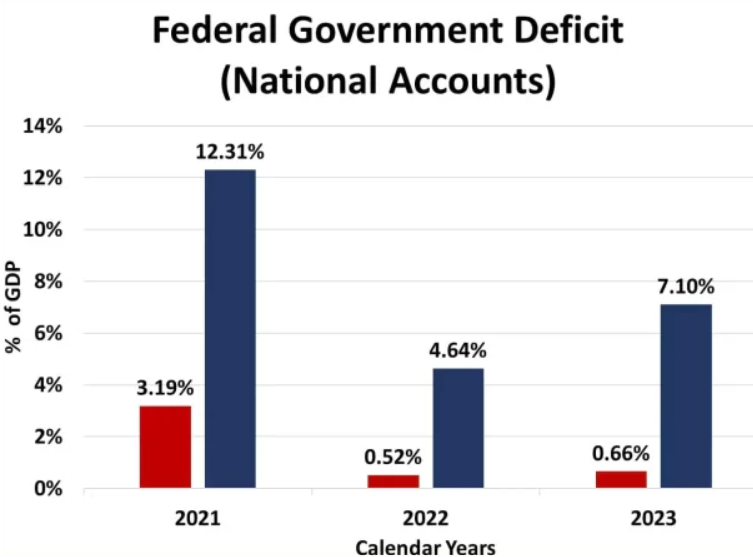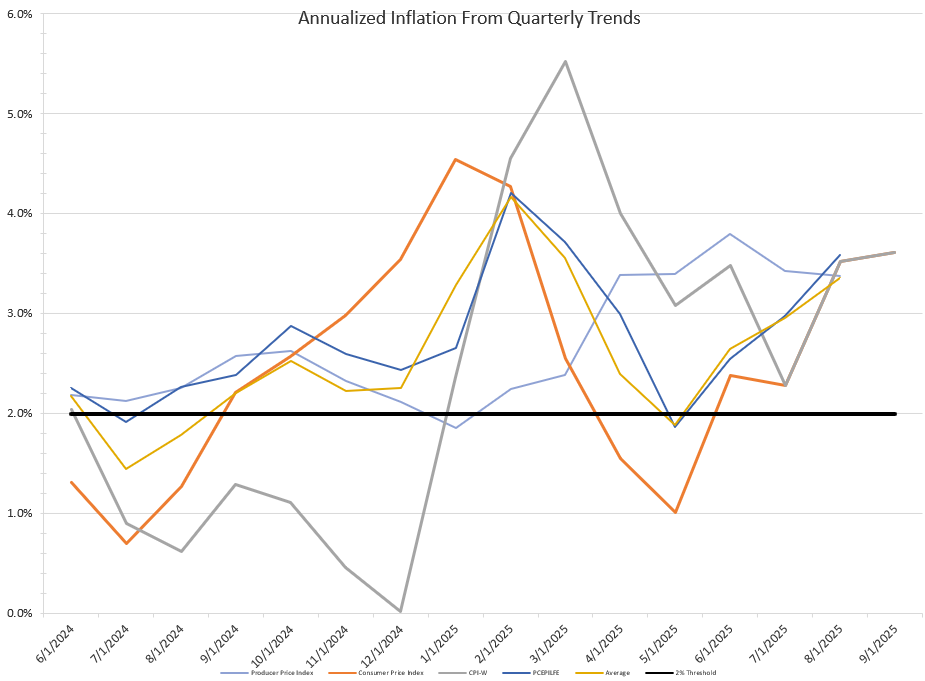Colin Read • September 30, 2023
An Economic Checkup - October 1, 2023

We are beginning the final quarter of what has been a tumultuous year. It appears our nation wishes to go out of 2023 with a bang, if Congress has its say, with but a whimper of inflation, and yet no recession.
Peoples in countries around the world are shaking their faith in institutions. All of us live in mixed economies, with the mix between the private sector and the public sector varying, but not incredibly widely. We all rely on the vibrancy of market economies and the institutions of government to ensure the macroeconomy continues to function smoothly.
Our faith has been shaken by inflation and instability. Let’s take this week to do some analysis of where we are.
On these web pages we have documented first the failure to identify inflation and then the accelerated rate to combat it. Inflation is like skidding in the snow. Anticipating the slide sufficiently early and correcting with small movements keeps our car on track. Reacting too late and hence overreacting invariably puts one in a spin. The Fed’s failure to react as the inflation rate ratcheted up dramatically mid last year resulted in runaway prices followed by the steepest interest rate runup in memory.
The Fed policy to jack up interest rates is designed to inflict pain, but not evenly. They are not fighting prices, but rather are fighting our expectation prices will rise. If we expect inflation will continue, we demand higher wages and push up our product prices. This causes inflation persistence and wreaks havoc in the economy.
To prevent inflation expectations, the Fed induces pain on a subset of the population. Those who are economically secure, who have a nice buffer between their income and expenses, and who tend to save rather than borrow and spend are relatively unaffected by a war on inflation. Those who live paycheck to paycheck, who must borrow, and who may lose their jobs as the Fed trades off inflation for unemployment bear the pain of Fed policy.
This recognition of an evolving economic reality takes some time, so the Fed’s effort to jack up interest rates to slow down economic activity has some lags. Households must exhaust any savings, layoffs take some time, and planned major expenditures take time to reevaluate. While the Fed has been raising interest rates for more than a year, they are only recently taking a bite on the economy.
These delays are a bit unusual. In simpler times, we tended to follow the lead government sets. Now, the private sector has more tools to hedge and protect against government policy. There are also more policies designed to mitigate the worst pain inflicted by tight monetary policy. In addition, the Fed appeared to knuckle more under political pressure early on in this recent adventure, which seems to have delayed their responses.
As we have noted often, our preoccupation with the annual inflation rate rather than an annualized rate based on more recent data means that inflation appears much less problematic during a price spike, and much more problematic well after the spike has abated. Only over the past quarter or two are we shedding the effects of very high inflation mid last year.
Instead, if we focus on more recent data over the past quarter or two, inflation is now almost invariably in the 2% range that is the goal of the Fed. The Fed and the public looks at half a dozen inflation measures. The include the Producer Price Index (PPIFIS), the seasonally adjusted urban consumer price index (CPIAUCSL), the non-seasonally adjusted consumer price index (CPIAUCNS), the consumer price index that excludes the volatile food and energy prices (CPILFESL), and versions of the consumer expenditure survey prices that include food and energy (PCEPI) and excludes food and energy (PCEPILFE).
While some of these measures are more volatile than others, today’s graph shows annualized quarter-to-quarter measures essentially track one another. None are above 4%, and some are below the magical 2%. By year’s end, they are trending to an average rate of 2.0%. Our inflation work has been accomplished.
Those on fixed income or with jobs for which wages have not risen by 10% over the past couple of years are still underwater. But, the rest of the economy has remained relatively resilient and has maintained modest growth. Many economists now believe we have averted a recession, or may experience a mild recession at best. That may be no consolation for those facing higher rents and food and energy costs, or who may have lost their jobs. But, inflation fighting is always on the backs of those who can least afford it and are most affected by it.
Just because inflation is converging on the appropriate range does not mean the Fed will move their foot from the brake to the accelerator. It may not ratchet up interest rates further, or it may do so only symbolically, but nor will it start to lower rates significantly. While more than a decade of an essentially zero Fed discount rate created a false normal, the current Fed rate less the inflation rate still comes out to around 2-3%. This real (inflation-adjusted) interest rate is actually quite normal and appropriate.
The higher interest rate also gives the Fed latitude to stimulate the economy should economic malady occur. This economic policy tool has not existed since 2008. Instead, our economy has relied on political tools of fiscal spending. Yet, Congress finds it increasingly difficult to pass budgets, as we witnessed this week, and to construct a long term fiscal plan that does not shift to tomorrow bills that have come due today.
Inadequacies of institutions designed to support the economy, the private sector, and the public goods and services upon which we all rely merely further erodes our faith in these institutions. We then spend more effort and savings insulating ourselves against the instabilities that arise when we (collectively) shoot ourselves in the foot. Economic risk is costly, and invariably the poorest who can least afford to accommodate the risk are those most displaced by ineffective or politicized policy.









